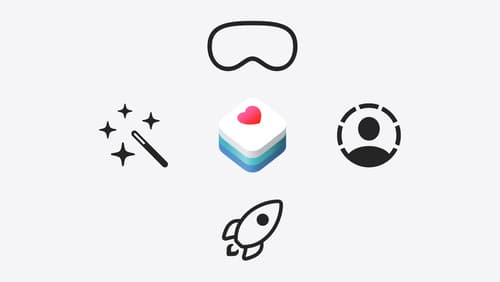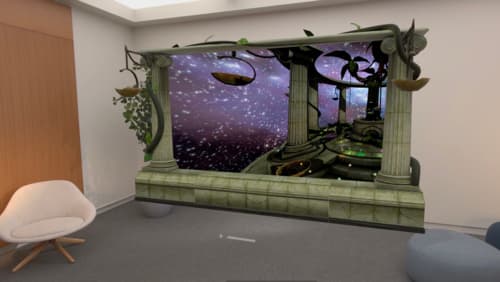How should I design for visionOS?
Asked on 2024-07-30
1 search
To design for visionOS, you should consider several key principles and strategies to create a great user experience. Here are some guidelines based on the content presented at WWDC:
-
Embrace Immersion:
- VisionOS is designed with people at the center of the experience to ensure interactions are comfortable. Your apps should also focus on creating immersive experiences that are unique to visionOS.
- Find your app's "key moment" that is optimized for visionOS. This is a moment in your app that leverages the unique capabilities of the platform to create an experience that stands out. For example, the Mindfulness app uses a gently pulsing flower to encourage breathing and focus, creating a sense of life in the scene (Design great visionOS apps).
-
Design for Comfort:
- Vision Pro is a device worn on the head and controlled with the eyes, so it's important to design interactions that require minimal physical movement. For instance, in the game Super Fruit Ninja, the play area has a geometric guide to keep the player within a safe boundary during gameplay (Design great visionOS apps).
-
Utilize Spatial Capabilities:
- Take advantage of the infinite spatial canvas provided by visionOS. For example, you can make charts dynamically resizable and compare multiple charts side by side to enhance the user experience (Get started with HealthKit in visionOS).
-
Follow Design Guidelines:
- Refer to Apple's Human Interface Guidelines for the latest best practices. These guidelines are continuously updated to help you design apps that feel native to visionOS (Design great visionOS apps).
-
Leverage Standard Components:
- Use standard SwiftUI components like TabView and sheets, which translate beautifully to visionOS. This ensures a consistent and familiar experience for users (Get started with HealthKit in visionOS).
-
Consider User Interaction and Placement:
- Design your content placement thoughtfully. For example, in the "Encounter Dinosaurs" experience, ARKit is used to understand the audience's space and find a great place for the portal, making the process feel magical for the user (Design interactive experiences for visionOS).
By following these principles, you can create visionOS apps that are immersive, comfortable, and delightful, leveraging the unique capabilities of the platform to provide exceptional user experiences.
Relevant Sessions

Get started with HealthKit in visionOS
Discover how to use HealthKit to create experiences that take full advantage of the spatial canvas. Learn the capabilities of HealthKit on the platform, find out how to bring an existing iPadOS app to visionOS, and explore the special considerations governing HealthKit during a Guest User session. You’ll also learn ways to use SwiftUI, Swift Charts, and Swift concurrency to craft innovative experiences with HealthKit.

Design interactive experiences for visionOS
Learn how you can design a compelling interactive narrative experience for Apple Vision Pro from the designers of Encounter Dinosaurs. Discover how these types of experiences differ from existing apps, media, and games, and explore how to design narratives that bring audiences into new worlds. Find out how you can create stories that adapt to any space and size, provide multiple levels of interaction to make them accessible to all, and use animation, spatial audio, and custom gestures to further immerse people in your experience.

Bring your iOS or iPadOS game to visionOS
Discover how to transform your iOS or iPadOS game into a uniquely visionOS experience. Increase the immersion (and fun factor!) with a 3D frame or an immersive background. And invite players further into your world by adding depth to the window with stereoscopy or head tracking.
